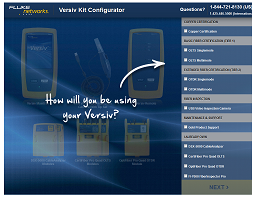Understand ISO/IEC 11801 - Generic Cabling for Customer Premises
March 3, 2016 / General, Standard and Certification, Industrial Networks
ISO/IEC 11801, Information technology – Generic Cabling for Customer Premises is being overhauled. The last version, edition 2.2 was published in 2011. In that version ISO/IEC 11801 was one all-inclusive document. Since then, because of its size, the standard has been divided into six parts:
- General Requirements
- Office Premises
- Industrial Premises
- Single-Tenant Homes
- Data Centers
- Distributed Building Services
The provisions for optical fiber components are now referenced in part 1, General Requirements, and this blog pertains to those requirements. The testing requirements continue to be described in ISO/IEC 14763-3 Edition 2.0, Information technology - Implementation and operation of customer premises cabling - Part 3: Testing of optical fibre cabling. For those familiar with TIA standards, the optical fiber sections defined in ISO/IEC 11801 are similar to TIA 568.3-D, Optical Fiber Cabling and Component Standard.
Some of the important proposals are as follows:
-
In the edition 2.2 version, the mechanical and optical characteristics are defined in table 79 for maximum attenuation of a connector at various confidence levels (i.e. 95 % ≤ 0.50 dB). Maximum splice loss is also defined. Minimum return loss is defined as 20 dB for multimode and 35 dB for single-mode. The multimode launch condition, encircled flux, is defined for installed cabling by the test standard ISO/IEC 14763-3 which then references IEC 61280-4-1, Installed cable plant – Multimode attenuation measurement for the launch condition. Encircled flux is required for these four test cases: 850 nm/1300 nm on 50 µm and 62.5 µm fiber.
- In the proposed revision/change, connector attenuation is defined only with an LC/PC connector terminated on 50 µm fiber referenced by IEC 62664-1-1 that defines an encircled flux launch only for 850 nm on 50 µm fiber. However, for this case, the encircled flux template is different than that defined in IEC 61280-4-1. At this time, a connector terminated on single-mode fiber is not referenced for mechanical and optical characteristics. Splices are undefined.
-
In the edition 2.2 version, attenuation measurements are required for reference and installation conformance.
- There is no difference in the proposed change.
-
In the edition 2.2 version, propagation delay measurements are recommended for reference and installation conformance.
- There is no difference in the proposed change.
-
In the edition 2.2 version, polarity measurements are required for reference and installation conformance.
- There is no difference in the proposed change.
-
In the edition 2.2 version, length measurements are recommended for reference and installation conformance.
- There is no difference in the proposed change.
-
In the edition 2.2 version, return loss measurements are required for reference and installation conformance.
- In the proposed change, return loss is removed. Return loss is required and proposed to reference, in the mechanical and optical characteristics clause, an LC/PC connector terminated on 50 µm fibers as defined in IEC 62664-1-1 (e.g. 20 dB). Return loss is not yet defined for single-mode, but IEC 62644-1-2 for an LC/APC connector and IEC 62644-1-3 for LC/PC single-mode connector may be logical choices.
When keeping up with industry needs, revisions to standards can be confusing. The revision to ISO/IEC 11801 is one such case. From the proposals outlined above, one can surmise that the LC connector will become the de facto connector and other connectors such as the SC may be “grandfathered”. There is also a trend to focus more on 850 nm and 50 µm cabling since more applications run at that wavelength/fiber size. However, sometimes the installed base is forgotten. The balance between moving forward and improving standards while supporting past implementations of standards can at times be problematic.





